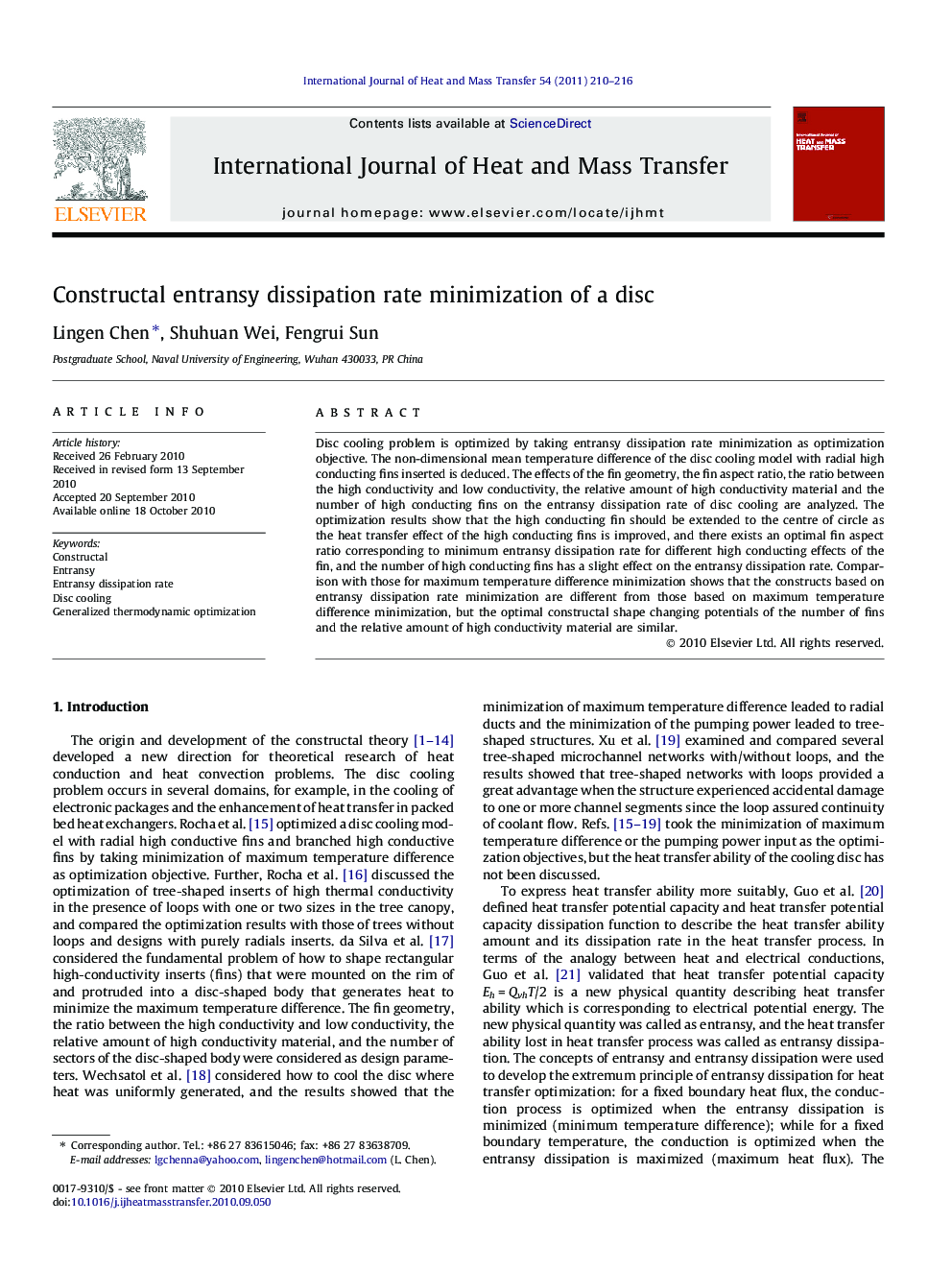| Article ID | Journal | Published Year | Pages | File Type |
|---|---|---|---|---|
| 660530 | International Journal of Heat and Mass Transfer | 2011 | 7 Pages |
Disc cooling problem is optimized by taking entransy dissipation rate minimization as optimization objective. The non-dimensional mean temperature difference of the disc cooling model with radial high conducting fins inserted is deduced. The effects of the fin geometry, the fin aspect ratio, the ratio between the high conductivity and low conductivity, the relative amount of high conductivity material and the number of high conducting fins on the entransy dissipation rate of disc cooling are analyzed. The optimization results show that the high conducting fin should be extended to the centre of circle as the heat transfer effect of the high conducting fins is improved, and there exists an optimal fin aspect ratio corresponding to minimum entransy dissipation rate for different high conducting effects of the fin, and the number of high conducting fins has a slight effect on the entransy dissipation rate. Comparison with those for maximum temperature difference minimization shows that the constructs based on entransy dissipation rate minimization are different from those based on maximum temperature difference minimization, but the optimal constructal shape changing potentials of the number of fins and the relative amount of high conductivity material are similar.
